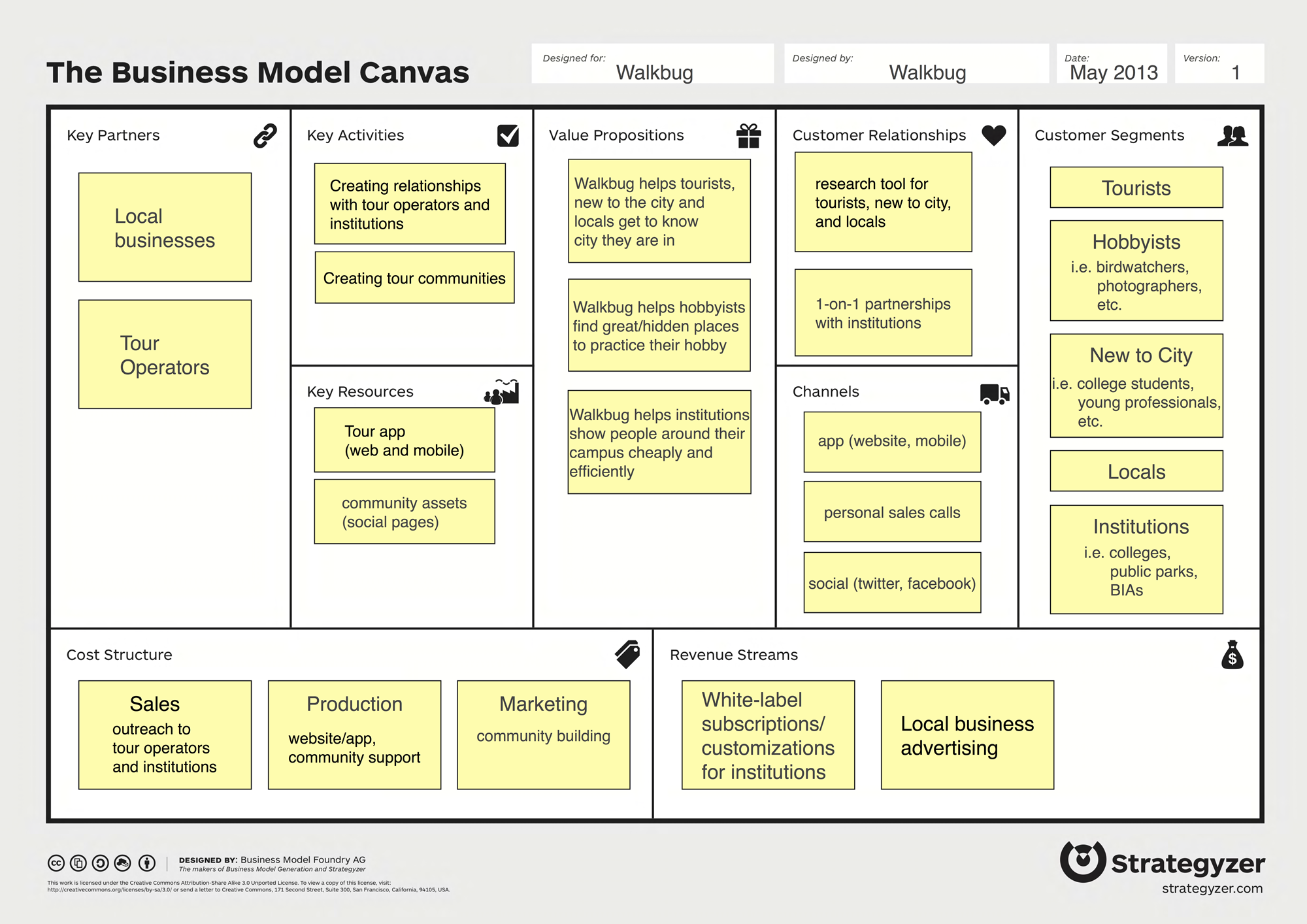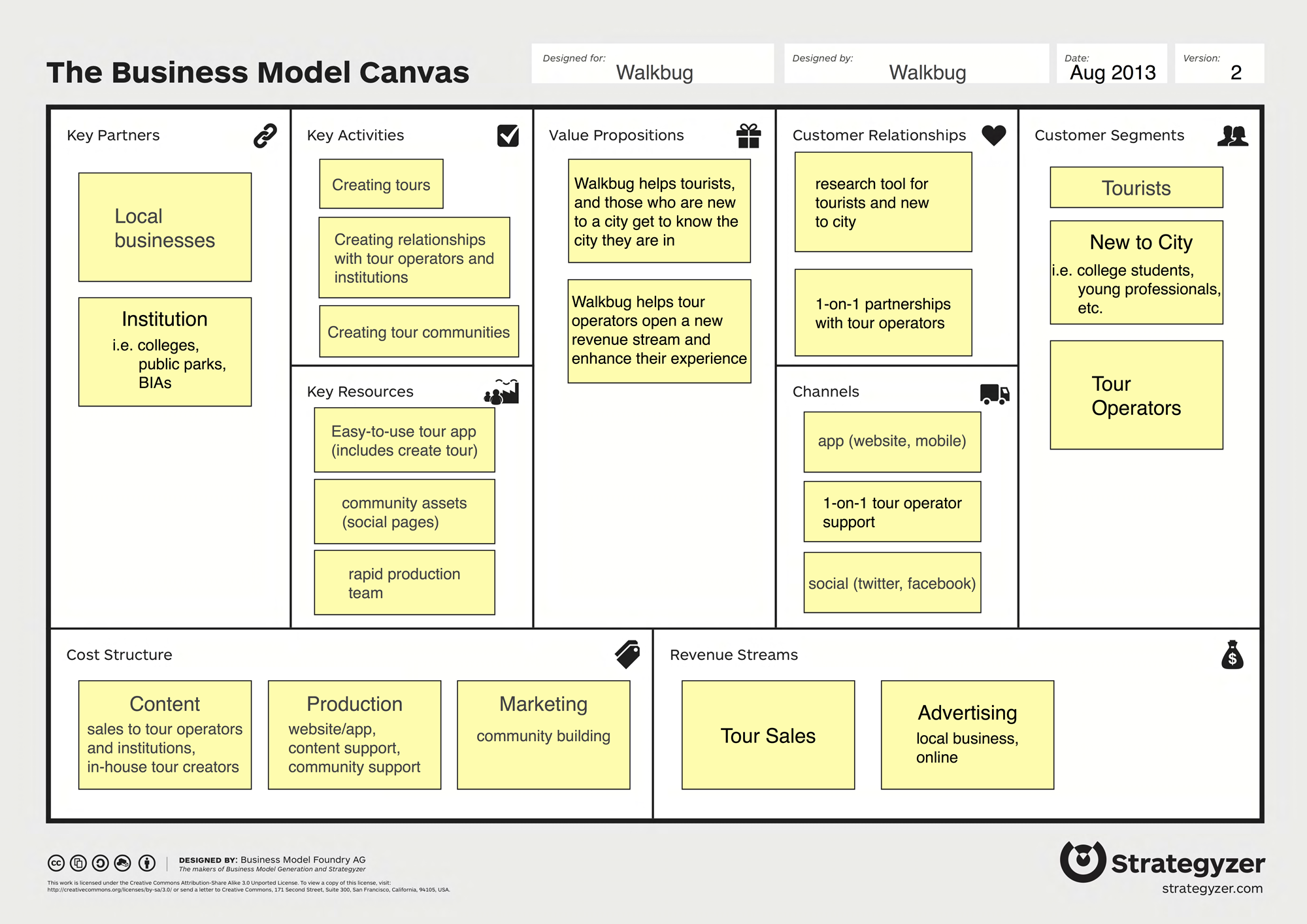Writing a business plan is overwhelming. There are so many moving pieces, so many parts, it’s hard to know where to start. Even if you do manage to put something together, it’s easy to miss something vital.
Maintaining a business plan is hard. Things can change so quickly at a startup: your target market today may not be your target market a month from now, or you may completely change your value proposition based on real-world feedback. You don’t have time to rewrite your business plan every time something changes.
The simple fact is: your business plan is vital. It feeds into everything else your company does. Funding, pitching, managing, programming, designing, hiring – everything your company does can be completed faster and better when everyone is following the same plan. A business plan allows you (and your team) to focus.
So how do you do it? I struggled with this for many years, but finally found something that is not only easy to update, but also easy to understand. This means that you can focus EVERYONE on your team very quickly. It’s called the Business Model Canvas.
Planning Your Business Plan: the Business Model Canvas
The Business Model Canvas (BMC) is a way to visualize your entire business model on a single page. Here’s a quick primer:
Basically, you’re stripping away all the numbers, details and tactical information to leave you with only the most essential information to describe your business. It’s the skeleton of your business.
Most people delay writing a business plan because it requires a lot of research and details – stuff you might not even need until you’ve validated some of your assumptions (i.e. will people actually pay me for this?). For most businesses, it’s a good decision to delay writing your business plan – why do a bunch of work when you don’t need to?
However, you can create a BMC for your idea in less than 30 minutes. In this BMC, you can easily see:
- which assumption you need to validate
- who you need to talk to
- what other tasks/research you’ll need to do
As you start validating (or invalidating) your assumptions, you can quickly update your BMC with the relevant info. As your team grows, you can use the BMC to relate your vision to others. When it’s time to find investors, the latest BMC becomes the skeleton from which your pitch or business plan grows.
An Example: Walkbug
Okay, so you know what and why, now I’m going to show you how. I used the BMC to great effect on a project I was involved with called Walkbug, which allowed you to access walking tours on your phone.
The project came out of a startup weekend event in 2013. Here’s a reproduction of the BMC that the team worked from for that event:

Now, there are a ton of assumptions in this canvas. THAT’S OK! Using this canvas as a jumping off point, we sent our team to talk to tourists and college students. We gained a lot of information, validated a bunch of our assumptions, and ended up winning the event.
After the weekend, we decided to move forward with the idea and enter a bigger pitch competition. We still had a lot of assumptions to validate, so we started building a prototype and expanding who we were talking to. Although we had a great response from many users, Some issues came up with our partnerships, operations and revenue models.
- institutions not only had extremely long sales cycles, but were also looking for a level of customization that we weren’t willing to provide
- many tour operators didn’t see the value in partnering with us
- local businesses would only work with us after we had reached a critical mass of users
- creating good content is HARD
- hobbyists and locals were difficult to serve effectively
So we went back to the drawing board and updated our canvas:

Here are the changes we made to the canvas:
- Tour operators are now potential customers
- Institutions are now partners (we trade their content for our platform)
- We changed our potential revenue streams
- We updated our key activities and costs to include content
- We removed hobbyists and locals as a focus for now (we could try to reach them later)
As you can see, the canvas evolved as we got more information. We’re currently on our fifth version of our business model, and may well be at our sixth after the next round of validation.
One thing to note: at one point, the evolution of our canvas made us realize that we had to get funding to move forward. Using the updated BMC, I was able to write a business plan fairly quickly. That’s just another benefit of using the canvas.
Try it Yourself!
Doing is believing. Take 30 minutes and convince yourself. Here are some assets to help you with that:
- Preview of the Business Model Canvas Ebook (pdf)
- A blank BMC (pdf) that I made for my own use
- The official BMC worksheet (pdf)
If you’re on a Mac, you can easily use Preview (included in OSX) to fill out a canvas for your business. If you’re on Windows, there are a ton of other annotation tools. Just search for “windows pdf annotate” to find them.
